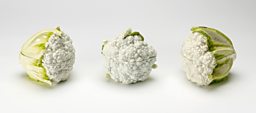Nicholas Sprimont
By Kathryn Jones, curator of Decorative Arts, Royal Collection Trust
When I was working on this exhibition my hero was Nicholas Sprimont, a goldsmith who went on to create the first porcelain factory in England. Sprimont is not just some mysterious character creating gorgeous bits of silver; we know some things about him. He came from Liège and worked with the Huguenot goldsmiths in London. His wife said he was able to draw and model well, and there are even some surviving drawings attributed to him (now in the V&A).
drawing inspiration from the world around him and leaving an amazing legacy that's fun and colourful and beautiful all at the same timeKathryn Jones on Nicholas Sprimont
He created the most exciting rococo centrepiece (now gilded) for Frederick, Prince of Wales – a fantastic confection of coral, shells and small sea creatures combined with mermen and dolphins and topped off with a figure of Neptune. Although it is not hallmarked by Sprimont there are strong reasons to believe it is his work. The accompanying pieces include salt cellars in the shape of crabs, cast from real shells with incredible detail and life-like accuracy. And the sauce-boats have amazing figural handles which seem to twist and spiral through 360 degrees.
When you see this group of objects on the table all together you realise what dinners with Frederick would have been like – with the candlelight flickering on the gilding, bringing these works to life and the food itself adding to the artistry of the whole thing.
Nicholas Sprimont left the world of metalwork for the new venture of a porcelain factory at Chelsea – surely a high risk venture in the days when no English factory had achieved success at creating porcelain. I love the early works from the factory now in the exhibition – charming tureens in the shape of cauliflowers and bunches of asparagus (what's not to love?), and plates painted with multi-coloured insects and plants. They were obviously having fun with their new product, and how can we not admire Sprimont for getting on with it, even without any royal patronage?
In fact, he was the one who wrote to the government asking them to stop importing foreign porcelain so that the English could have a chance. Sprimont even set up a school for local boys to teach them how to draw, paint and model for his factory.
When you stand in The Queen's Gallery now, you can see Sprimont's imagination in overdrive – drawing inspiration from the world around him and leaving an amazing legacy that's fun and colourful and beautiful all at the same time.
Kathryn Jones is curator of decorative arts, Royal Collection Trust. She is a curator of the exhibition The First Georgians: Art and Monarchy 1714-1760 (2014) and the author of "For the Royal Table: Dining at the Palace (2008)".





